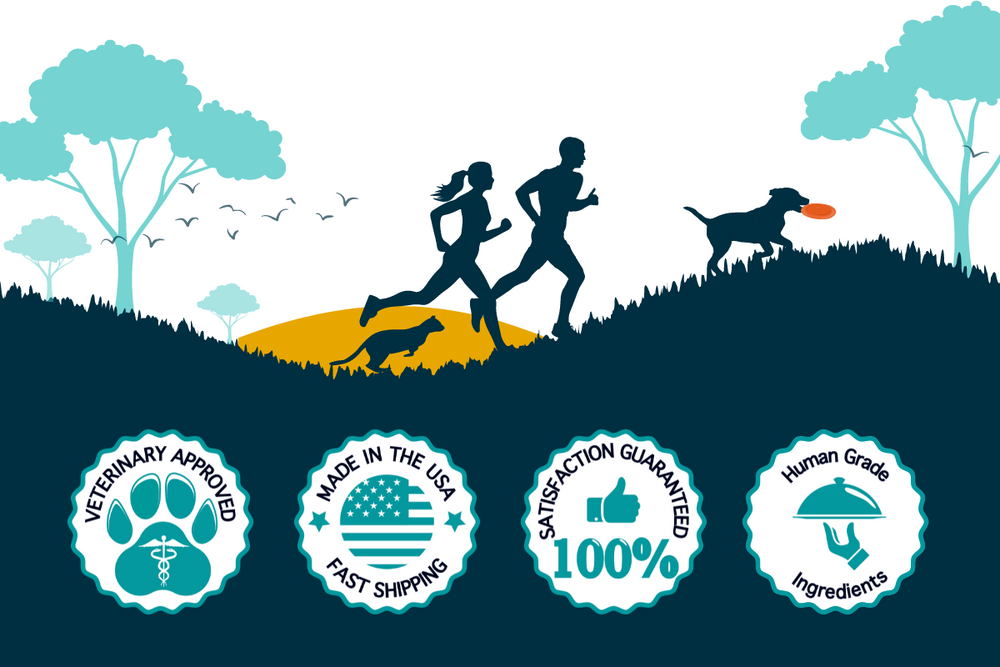Author: Robert L. Gillette, DVM, MSE, DACVSMR Katherine Backel, DVM Red Bank Veterinary Hospital
Improve performance and prevent injury
“How do I warm up my dog?” is a common question heard at canine training centers. This has previously been addressed in articles related to elite level dogs participating in agility. But, we should also discuss how to prepare novice and non-competitive dogs for the basic activities.
First, we should discuss the worth and purpose of warming up. Other elite animal athletes compete with minimal warm-up. For example, injury rates in racing greyhound are reported to be 2 out of 1,000 dog starts.
1 This is negligible when compared to injuries reported recently in human elite sprinters, where reported rates of hamstring injuries were almost 20%.
2 It should be noted that greyhounds race on a surface that is designed to minimize injury during the event. Obstacles, directional changes and jumps are not part of their racing environment. These types of physical demands are more similar to what human soccer player might experience. In human sports medicine literature, Herman et al. demonstrated that the implementation of an effective neuromuscular warm-up strategy can reduce the incidence of lower limb injuries in footballers, soccer players and army recruits.
3 This would suggest that a proper warm-up program for the dog should be implemented prior to agility events.
There are three major benefits to a proper warm-up:
1) Enhanced performance 2) Injury reduction and 3) Improved recovery. Many of the benefits of warming up are derived from temperature-related physiologic changes in select areas of the body. A slight elevation in body temperature enhances oxygen delivery, improves cellular energy processing, increases blood flow to the muscles, improves muscle and tendon elasticity, increases sensitivity of nerve receptors and speeds neuronal impulses. These small changes help prepare the body to respond to the demands of physical activity and allow an athlete to perform at a higher level.
4
How to warm up your canine athlete
It is important to focus on the demands of the sporting event and address the needs of your individual dog when putting together a warm-up routine.
An appropriate warm-up protocol should both focus on muscle groups that will be recruited during the event and address the general needs of the specific athlete. In canines, the main source of power and speed is derived from the complex musculature over the lower back, collectively called the epaxial muscles.
5 In addition to that group of muscles, agility dogs rely heavily on their rear limb muscles for propulsion and forelimb muscles for navigation. For this reason attention must be given to warming up these muscle groups as well.
There are two main types of warm-up strategies:
1. Passive warm-up 2. Active warm-up.
6 Passive warming consists of application of heat to specific muscle bodies or increasing body temperature with the use of wraps or garments.
Active warm-up, on the other hand, requires putting muscles in motion to increase temperature and blood flow in order to ready the body for work.
- If your dog has specific areas of muscle soreness – consider applying heat to the area for 10 minutes about 30 minutes prior to your warm-up.
- 60 minutes prior to the first event – start with a 15 minute controlled, light jog or walk – this is to increase your canine’s heart rate and initiate increased blood flow to muscles.
- Following a walk/jog, start with techniques to help warm up specific muscle groups7
- Jumping, on and off a platform or over jumps smaller than competition – this is to help prepare the rear leg and back muscles
- Turning in tight circles – this will warm up the back muscles and front legs as they turn
- Other proposed warm up activities described by Dr. Canapp and Dr. Zink include tugging for an active gracilis muscle stretch, paws on the chair stretch, cookie to the hip for paraspinal stretch and play bowing for activation of triceps8
Following these guidelines will help provide a successful, safe and fun-filled afternoon with your canine athlete.
References:
1.Gillette, R. Optimizing Performance and Preventing Injuries of the Canine Sprint Athlete. Presentation given at North American Veterinary Conference. 2007.
2.Noel Pollock, Anish Patel, Julian Chakraverty, Anu Suokas, Stephen L J James, Robin Chakraverty. Time to return to full training is delayed and recurrence rate is higher in intratendinous (‘c’) acute hamstring injury in elite track and field athletes: clinical application of the British Athletics Muscle Injury Classification. Br J Sports Med doi:10.1136
3.Herman, K, Barton, C, Malliaras, P, Morrissey, D. The Effectiveness of Neuromuscular Warm-Up Strategies, That Require No Additional Equipment, For Preventing Lower Limb Injuries during Sports Participation: A Systematic Review. BMC Medicine. 2012. 10:75.
4. Shellock, Frank G., Prentice, William E. Warming-up and stretching for improved physical performance and prevention of sports-related injuries. Sports Medicine. 1985. 2(4); 267-278.
5. Zebas, C. J., Gillette, R. L., Hailey, R. L., Schoeberl, T., Kratzer, G., & Joseph, Y (1991). Kinematic descriptors of the running gait in greyhound athlete. In R. N. Marshall, G. A. Wood, B. C. Elliott, T. R. Ackland, & P. J. McNair (Eds.), XIIIth International Conference on Biomechanics: book of abstracts (pp 469-470). Perth, Australia: University of Western Australia.
6.Shellock, Frank G., Prentice, William E. Warming-up and stretching for improved physical performance and prevention of sports-related injuries. Sports Medicine. 1985. 2(4); 267-278.
7.J. C Andersen. Stretching Before and After Exercise: Effect on Muscle Soreness and Injury Risk. J Athl Train. 2005 Jul-Sep; 40(3): 218–220.
8.Canapp, D. & Zink, C., Preventing Injuries, Clean Run, (2008) Vol. 14, July, pp 60 – 62.





